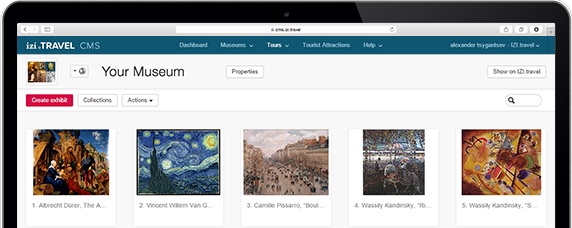The Madonna of the Rosary altarpiece
The Madonna of the Rosary altarpiece was donated around the year 1800 by the pharmacist Raffaele Amorusi. The splendid polychrome canvas is framed by a shining square golden border: in a double oval wreath of ten- grouped white roses punctuated by red roses representing the rosary beads, there is the shining figure of the Madonna holding the holy Child with her hands, she seems to donate Him to those who stand and observe her. A large bluish-colored cloak with gold stars covers her shoulders and a precious crown surrounds her head. Two white stems of lilies depart from the foot of Child Jesus whose open arms seem to touch the hem of maternal mantle. Above the crown in all its purity shines a white dove, the symbol of the Holy Spirit, and further above there is the half-length figure of Almighty Father ready to welcome all humanity with his open arms. The set of the Almighty Father, the Holy Spirit and the Child Jesus in a vertical line contains the mystery of the Holy Trinity and Unity of God. The use of colors, from golden to light cinnabar, dramatically harmonize well with the representation of the Divine. Around the oval wreath of roses there are fifteen polychrome medallions representing all the mysteries that make up the prayer of the Holy Rosary. They are alternated with leaves and roses and supported by four angels. At the bottom of the canvas in the corners there are the figures of St. Dominic and St. Catherine worshiping the Holy Virgin with the Rosary beads in their hands. The use of the image of the Virgin of the Rosary in the Christian iconography started after the victory in the Battle of Lepanto (1571) because St. Pius V attributed it to the divine intervention of Our Lady of the Rosary. It symbolizes the victory of the Christian world against infidels, the link between the rosary and the Dominican spirituality, the affirmation of universal prayer of the rosary and its use as a means of evangelization. The constant feature is the depiction of the Virgin Mary who holds in her arms (or knees) her divine Child and gives St. Dominic the rosary crown. Later two other elements were added in the iconography of the Rosary: the depiction of St. Catherine of Siena and the 15 mysteries of the Rosary. St. Catherine of Siena always looks at Child Jesus, in contemplation or mystical dialogue. St. Dominic sometimes looks at the Virgin, sometimes at the Rosary beads he is being given, other times at the people contemplating the painting. The two figures (St. Dominic and St. Catherine of Siena) transmit the spirituality they live, showing one of the means that helps its realization, the rosary. The depiction of the fifteen mysteries of the rosary has become a key element in the representation of the episode of the delivering of the rosary beads since the end of 15thcentury. It clearly invites to meditate Gospel episodes. Among the paintings depicting the Madonna of the Rosary, the most remarkable are: the panel painting of Vincenzo Azzani of "Pavia" painted in 1540 for the Church of San Domenico di Palermo. An example of the icon of St. Dominic who is given the Rosary, is a painting by John Bernardo Azzolini (1560-1610) which is at the University Church of St. Peter Martyr. The Catholic Church celebrates the feast of Our Lady of the Rosary on October 7. This feast was instituted by Pope Pius V with the name of "Our Lady of Victory" in memory of the Battle of Lepanto that took place on 7 October 1571, when the fleet of the Holy League (formed by Spain, the Republic of Venice and the State Church) defeated the Ottoman Empire.
创建您自己的音频之旅!
使用此系统的移动导游应用是免费的


